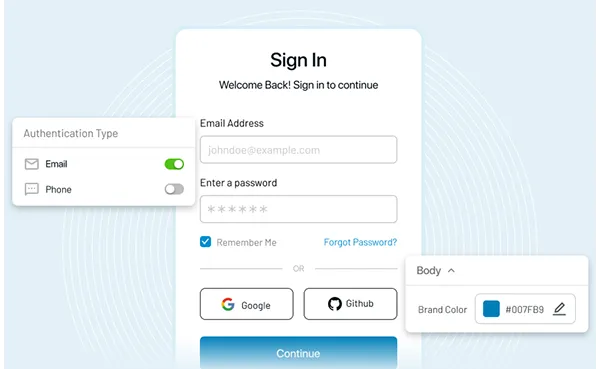Around the world, most of the workforce started to work from home to cope with the pandemic. Even post COVID-19, managers are strategizing the best remote working tips to lead their teams at ease.
It is also equally important to glean remote-work policies even if they do not continue the work-from-home model. After all, it will make life easier for future references.
A major challenge is to keep employees disciplined and help them maintain the consistency of their performance. It has been observed that most of the active and high-performing employees have had cases of low morale and less engagement in the remote model.
Other challenges that slow the outcomes and impact remote working include less face-to-face supervision, social isolation, household chores, and more.
Here are some remote working tips that can ease the pressure and challenges of the work-from-home model for organizations and their management.
They worked for us at LoginRadius. Pretty sure they will work for you too!
1. Deal with the situation with a proactive approach.
When countries were under lockdown, most organizations started remote working drills. At LoginRadius, we floated several surveys among the team and got their inputs on them.
It is important for an organization always to have a proactive approach and predictable thinking of all future aspects, whether positive or negative. We should always prepare ourselves for challenges and should have a positive and learning attitude.
2. Roll out new policies and processes.
When the news of the pandemic started flooding and circulating across the world, we started taking action accordingly.
We prepared and rolled out new policies and processes. We were open to suggestions from our team members and discussed their feasibility by conducting various managerial meetings.
3. Daily video conferencing (morning and evening syncing).
This may sound overkill, but it is the best way to keep in touch with your employees and maintain face-to-face supervision.
A couple of pre-shift and post-shift meetings daily can motivate and encourage your team. This activity can help the employees to maintain their performance.
4. Maintain the communication.
When it comes to the tasks, responsibilities, or productions, good communication can make the task feasible in remote working. Daily check-ins are a mandatory step of starting a day.
Frequent communication with the team helps the workforce to complete all the desired tasks. But remember! over communication can lead to a greater overhead.
5. Be techno-friendly.
There are some communication and management tools available that make communication easy around the globe.
Applications like Google-Meeting, Hangouts, Zoom, Microsoft Teams, etc., can help managers keep track of their respective teams and handle them remotely.
6. Set expectations and refocus on all employees.
As previously discussed, due to the absence of training on the work-from-home model, even high-performing employees can be defocused on their goals and responsibilities.
Setting the expectation with goals and requesting feedback is an important step to ensure alignment.
7. Focus on employee engagement and well-being.
At LoginRadius, we are maintaining a high valued employee caring culture. We planned events and activities virtually and also added a few more trainers and life coaches for our employee’s well-being. You can also conduct virtual meetings, events, and get-togethers.
8. Be a mentor more than a boss.
Facing issues while working is normal for every employee, and coaching in every step is ideal for a manager. Being too bossy can demotivate your employees and lead them to become more casual.
Being a mentor and coaching your team is one of the best remote working tips to make your employees more efficient.
Apart from coaching, some other activities like addressing employee issues, appreciating them for every single achievement, engaging them in daily fun activities, keeping them at the front when it comes to any achievement, etc. goes a long way.
9. Empathize toward employees.
It is a good thing if the employees are sharing their issues with the managers and looking for a solution. It portrays that the employees have enough faith and trust in their managers when it comes to solving the issues.
Listening to their issues and empathizing with their struggles can help them to calm and sort out the issues. Also, try to become a good friend of them if you can. It more often seems that people make good friends at their workplace as well, so why not you?
10. Understanding every employee's issue.
Everyone has a different home environment. Some of them may have spouses, children, or other family members, some may not.
Some may have a vacant room for work purposes, while some attend meetings and do their work from the bedroom, dining, or balconies.
It is also possible some are working from café instead of home, and some are facing internet or electricity issues.
Understanding their problems and not judging and comparing their situation with other team members is an important step. That can make your remote working model easy and interesting for employees.
11. Celebrate remote social interactions and activities.
Keep your employees engaged in remote social interactions and activities daily. Having a healthy chat with personal goals and daily activities makes employees feel good.
Also having some daily fun activities like singing, playing guitar, etc., keeps employees energetic and enthusiastic.
Carving out some time from scheduled meetings can be helpful. Also performing some remote social activities or maintaining a dress code for several occasions can make the employees feel like the office in the home.
12. Provide efficient resources for remote work.
Manpower comes with two main factors. One is the proper training and the second is efficient and enough resources.
There is no doubt that every organization gives proper and suitable training to its new joiners as well as to the working employees if required.
But when it comes to resources, none of the employees bring any resources from their homes. They all are provided to them in the work area.
So when the pandemic hit globally and most of the organization started remote work, the main problem that arrived at first was resources.
It is not necessary that all of your employees possess a laptop or PC and internet connection at their home. Also, it is not fair if they pay the utility bills from their pocket.
The management should keep these things in mind for their remote working model to be successful. The organization should be prepared with a list of all needed resources and reimbursement that must be paid to its employees.
13. Hardware and software support.
You should prepare a supply chain management for the tools, hardware, and systems. As an IT company, you can’t work without computers; also be prepared for the repair and maintenance of hardware from time to time.
You can schedule IT people to visit the office once a week at least with all the safety measures to check the submitted hardware and repair them. Also, have a backup system ready to provide the employees so that work may not suffer and people can move ahead with their tasks smoothly.
Conclusion
Educating employees about the purpose of remote working can help them understand the importance of maintaining a healthy work-from-home culture.
Each of the tips mentioned above and advice requires patience, attention, flexibility, and consistency. Working out on these tips can lead to better results and help the management handle the remote teams more easily and comfortably.
















